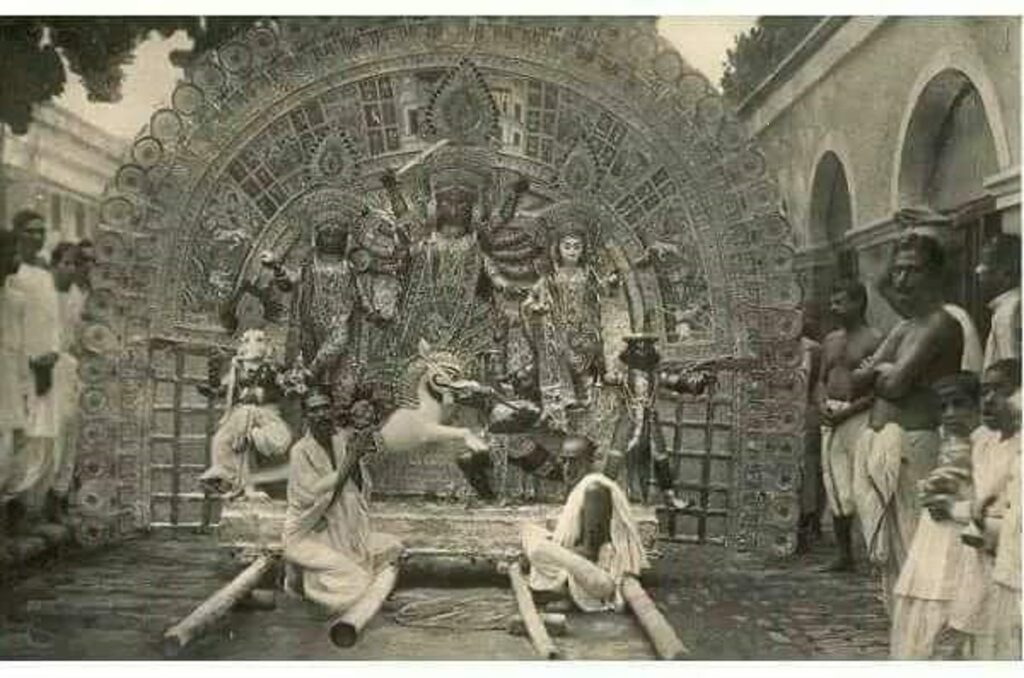Different records exist which attribute the root of Durga Puja in the territory of Odisha. All recorded accounts concur on the impact from different districts albeit some fanciful records portray an autonomous root. The Durga Puja is praised in two extraordinary courses in Odisha. In ‘Shakti Peethas’ or the sanctuaries of Goddesses, the Durga Puja is seen with appropriate ceremonies for three to sixteen days. It is celebrated as ‘Tridinatmaka’, three days from Asthami, Nabami, and Vijayadashmi. ‘Panchadinatmaka’ five days from Sasthi, Saptami, Ashtami, Nabami, and Vijayadashami, ‘Nabadinatmaka’ nine days from Ashwina Ditiyaa to Vijayadashami, ‘Shodadinatmaka’ sixteen days from Mulastami to Vijayadashami.
Goddess Durga is too adored by fans in various Pandals over the state. The Pandals are flawlessly enriched decorative. Although this particular year things have been very different because of the whole COVID-19 situation. There is no festive mood with the whole family visiting different pandals adorned in new clothes. As the limited festivities of this year come to a close today, let us have a look at how it all began in the first place. The history of ‘Gosani Jatra’ has always been sidelined due to the widely appealed notion of Durga Puja originating in the zamindari culture of Bengal.
The current type of worship of Durga with the earthen symbol in Odisha was begun during the rule of Ganga King Chodaganga Dev in the eleventh century at Puri. The earthen symbol of Mahishamarddini Durga is known as ‘Gosani’ and the Dussehra celebration is known as ‘Gosani Yatra’. It is essential that the co-love of Mahishamarddini Durga with Madhava who is Lord Jagannath is common from the eleventh century, Eastern Ganga administration period, in Puri.
Gosani alludes to mud pictures of Durga that, maybe, began in Puri. There’s no proper definition of the word ‘Gosani’. It likely alludes to Go-swamini, paramour of steers. However, Gosani recommends, she isn’t only the cow, she is additionally the escort of the cow, autonomous in her own right, and nobody’s property. The fight with the bison evil presence is one for setting up her power – this makes her the goddess of rulers.
Prior to the idea of ‘Sarvajanin Durga Puja’ began, it was being directed by royal houses, and the main such Puja being led anyplace on the planet at a similar setting and proceeding to date is in Odisha. It is at Rameswarpur in Bhadrak locale of the state, where it was begun around four centuries prior by the Mahashay family who relocated in from Kotarang close to Howrah as an aspect of Todarmal’s renowned overview of India during Emperor Akbar’s rule. The narrative of Durga – of her killing the bison devil and her orderlies drinking the blood of Raktabeeja – comes to us just from Devi Mahatmaya, part of Markandeya Purana, which goes back to around 1,500 years prior. Not every person concurs with this hypothesis, but rather pictures of the Goddess murdering the bison have been discovered uniquely in the period that kept the Kushana rule in Odisha.
It is said that in the year 1512 to 1517 AD Chaitanya Deva had come to Cuttack, which was the capital of The Gajapati Empire of Odisha, and at that point, the ruler of Odisha Gajapati Pratap Rudra Dev gotten him at Gadagadia Ghata arranged close to the stream bank of Mahanadi near the ruler’s castle prevalently known as Barabati post. In that year Shree Chaitanya Deva began Durga Puja at ‘Binod Bihari’ sanctuary now known as ‘Balu Bazaar’. Further, it is additionally accepted that Netaji Subhas Chandra Bose, whose origin, is in Cuttack had composed Durga puja with extraordinary pageantry and show to compose youths in British India precisely like Lokamanya Balagangadhar Tilak had done it at Maharastra with the Ganesh Utsav. The previously recorded Sarvajanin Durga Puja in the state is said to have been in the year 1832 in the Kazi Bazaar zone of Cuttack.
It is consequently one of the prime celebrations of Odisha. One explanation behind the wide acknowledgment of Durga Puja is the significance of Maa Tarini, who is viewed as one of the epitomes of ‘Shakti’ in Odia culture.

